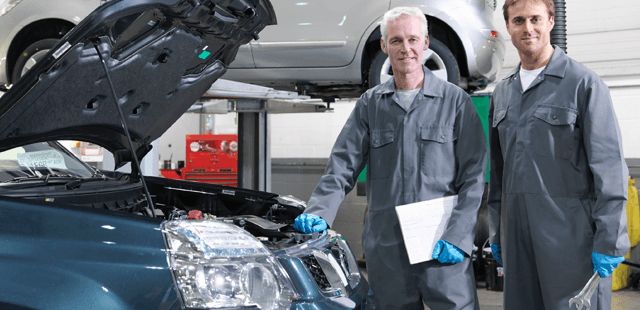Featured

2 key services that are often ignored but have a substantial impact on tire durability and efficiency are tire rotation and placement. Allow's dive into what tire turning and positioning are and why they're essential for your auto.
What Is Tire Rotation? Tire turning is the process of relocating your tires from one placement to an additional to ensure they wear equally. Because your auto's tires work at different rates relying on their setting (front tires versus back tires), rotating them on a regular basis aids to disperse the wear uniformly, leading to a much longer life expectancy for your tires.
Tires on the front axle often tend to put on quicker than those on the back axle, specifically in front-wheel-drive cars and trucks, where the front tires take care of both steering and power. On the various other hand, back tires might wear unevenly relying on the automobile's weight circulation and driving problems. By rotating your tires every 6,000 to 8,000 miles (or as advised by the supplier), you'll make certain a more balanced wear pattern.
What Is Tire Alignment? Tire alignment, also called wheel alignment, refers to adjusting the angles of your vehicle's wheels to the producer's specifications. Proper positioning guarantees that your tires are directing in the appropriate instructions, and it aids optimize tire life and boost vehicle handling. There are three major elements of placement: camber, wheel, and toe.
Camber describes the tilt of the tires from the front of the lorry. If your tires are tilted excessive inward or exterior, it can create uneven wear. Caster describes the angle of the guiding axis when viewed from the side of the cars and truck. This impacts the security of the guiding, especially when driving straight. Toe describes the angle at which the tires aim internal or external when viewed from above. This impacts how your car tracks when traveling. A proper positioning guarantees that all four tires are directing right in advance and are angled appropriately. Imbalance can result from hitting splits, visuals, or simply from the wear of suspension elements with time.
Why Tire Rotation and Placement Matter. Extended Tire Life. Both tire turning and alignment help prevent unequal tire wear. When your tires wear uniformly, they last much longer, which can save you cash in the future by lowering the requirement for early replacements.
Improved Safety. Appropriate tire rotation and positioning enhance lorry stability and handling. Misaligned tires or unevenly used tires can adversely impact your capability to steer and quit your vehicle, specifically in emergency scenarios. Routine maintenance ensures your tires do optimally, providing a much safer driving experience.
Better Fuel Performance. If your tires are not lined up correctly, they may drag against the road surface, causing resistance. This extra friction can minimize gas performance, causing your vehicle to consume even more gas. Regular tire placement guarantees that your lorry relocates effectively, enhancing gas mileage.
Boosted Convenience. Misalignment or unevenly worn tires can cause a rougher ride, as your vehicle might pull away or cause vibrations. By keeping your tires turned and straightened, you'll take pleasure in a smoother and more comfortable driving experience.
Indicators That Your Tires Required Turning or Alignment. It's vital to stay alert for any type of indicators that your tires require turning or alignment. Look out for these typical indications:
Uneven Tire Use: If you observe that tire is substantially extra used than the others, it may be time for a rotation or positioning. Guiding Pull: If your car draws to one side while driving directly, this might suggest imbalance. Resonances: If you really feel vibrations in the steering wheel or the auto itself, it can be a sign of imbalance or unequal tire wear. Screeching Tires: Unusual tire sound can likewise suggest inappropriate alignment or the requirement for a tire turning. Exactly how Frequently Should You Revolve and Straighten Your Tires? Tire rotation should generally be done every 6,000 to 8,000 miles or as specified in your vehicle's owner's guidebook. It's an excellent idea to turn your tires throughout every oil change, as this will assist you remain on top of regular maintenance.
As for positioning, it does not require as regular service. Commonly, positioning must be checked a minimum of yearly or whenever you see issues like pulling to one side or vibration. You may also require positioning if you've hit a huge fracture or curb, which can toss your wheels out of placement.
Conclusion: Maintain Your Tires in Top Forming. Tire turning and alignment are vital services that keep your lorry running efficiently, securely, and efficiently. By making the effort to have your tires turned and lined up regularly, you're purchasing your vehicle's performance and durability, while also improving your safety and security when traveling. Stay aggressive with tire maintenance, and your car will thanks with far better gas economic situation, boosted handling, and prolonged tire life.
Latest Posts
Achieve Your Financial Dreams with WyHy's Wide range Management Solutions
Teen Independence Account: A Smart Start to Financial Independence
Discover Vision Center South: Your Essential Eye Care Experts
More
Latest Posts
Achieve Your Financial Dreams with WyHy's Wide range Management Solutions
Teen Independence Account: A Smart Start to Financial Independence
Discover Vision Center South: Your Essential Eye Care Experts